| This article is part of a series on the |
| United States Senate |
|---|
 Great Seal of the United States Senate |
| History of the United States Senate |
| Members |
|
|
| Politics and procedure |
| Places |
The presiding officer of the United States Senate is the person who presides over the United States Senate and is charged with maintaining order and decorum, recognizing members to speak, and interpreting the Senate's rules, practices, and precedents. Senate presiding officer is a role, not an actual office. The actual role is usually performed by one of three officials: the vice president of the United States; an elected United States senator; or, under certain circumstances, the chief justice of the United States. Outside the constitutionally mandated roles, the actual appointment of a person to do the job of presiding over the Senate as a body is governed by Rule I of the Standing Rules.
The United States Constitution establishes the vice president as president of the Senate, with the authority to cast a tie-breaking vote. Early vice presidents took an active role in regularly presiding over proceedings of the body, with the president pro tempore only being called on during the vice president's absence. During the 20th century, the role of the vice president evolved into more of an executive branch position. Now, the vice president is usually seen as an integral part of a president's administration and presides over the Senate only on ceremonial occasions or when a tie-breaking vote may be needed. It is now often used as one of the forms of checks and balances by the executive branch to the legislative.[1]
The Constitution also provides for the selection of a president pro tempore of the Senate, to preside when the vice president is absent from the body (as the meaning of pro tempore, literally "for the time being"). The Constitution does not specify who can serve in this position, but the Senate has always elected one of its current members. By tradition, the position is given more-or-less automatically to the most senior senator of the majority party. In actual practice in the modern Senate, the president pro tempore also does not often serve in the role (though it is their constitutional right to do so). Instead, as governed by Rule I, they frequently designate a junior senator to preside.
When the Senate hears an impeachment trial of the incumbent president of the United States, by the procedure established in the Constitution, the chief justice presides.
Constitutional authority
The Constitution provides for two officers to preside over the Senate. Article One, Section 3, Clause 4 designates the vice president of the United States as the president of the Senate. In this capacity, the vice president was expected to preside at regular sessions of the Senate, casting votes only to break ties. From John Adams in 1789 to Richard Nixon in the 1950s, presiding over the Senate was the chief function of vice presidents, who had an office in the Capitol, received their staff support and office expenses through the legislative appropriations, and rarely were invited to participate in cabinet meetings or other executive activities. In 1961, Vice President Lyndon B. Johnson changed the vice presidency by moving his chief office from the Capitol to the White House, by directing his attention to executive functions, and by attending Senate sessions only at critical times when his vote, or ruling from the chair, might be necessary. Vice presidents since Johnson's time have followed his example.[2]
Next, Article One, Section 3, Clause 5 provides that in the absence of the vice president the Senate could choose a president pro tempore to temporarily preside and perform the duties of the chair. Since vice presidents presided routinely in the 18th and 19th centuries, the Senate thought it necessary to choose a president pro tempore only for the limited periods when the vice president might be ill or otherwise absent. As a result, the Senate frequently elected several presidents pro tempore during a single session.[2]
On three occasions during the 19th century, the Senate was without both a president and a president pro tempore:
- July 9–11, 1850, following Millard Fillmore's accession to the presidency upon the death of Zachary Taylor, until William R. King was elected president pro tempore;
- September 19–October 10, 1881, following Chester Arthur's accession to the presidency upon the death of James A. Garfield, until Thomas F. Bayard was elected president pro tempore;
- November 25–December 7, 1885, following the death of Vice President Thomas A. Hendricks, until John Sherman was elected president pro tempore.
Additionally, Article One, Section 3, Clause 6 grants to the Senate the sole power to try federal impeachments and spells out the basic procedures for impeachment trials. Among the requirements is the stipulation that the chief justice is to preside over presidential impeachment trials. This rule underscores the solemnity of the occasion and aims, in part, to avoid the possible conflict of interest of a vice president's presiding over the proceeding for the removal of the one official standing between the vice president and the presidency.[3] The chief justice has presided as such only three times:
- Chief Justice Salmon P. Chase presided over the impeachment trial of Andrew Johnson in 1868;
- Chief Justice William H. Rehnquist presided over the impeachment trial of Bill Clinton in 1999;
- Chief Justice John Roberts presided over the first impeachment trial of Donald Trump in 2020.
According to Article One, Section 5, Clause 2 of the U.S. Constitution, the Senate is allowed to establish, for itself, its own rules of operations, including the roles and duties of the presiding officer. Those rules are known as the Standing Rules of the United States Senate, and Rule I deals with the appointment of a person to act as the chair, or presiding officer, for normal Senate proceedings. It recognizes the constitutionally mandated roles of vice president and president pro tempore, but goes further to allow for the appointment of an acting president pro tempore, and further allows for the president pro tempore to also designate any other senator to perform his duties. As a result, during the day-to-day operation of the body, it is rare for the actual presiding role to be handled by the president pro tempore (and rarer still for the vice president to do so). Instead, a designated junior senator is most commonly appointed to do the job.
Manner of address
The presiding officer is usually addressed as "Mr. President" or "Madam President." During impeachment trials of the president, the chief justice is referred to as "Mr. Chief Justice.”[4]
During joint sessions of Congress in which the president of the United States is giving the address, practices have varied as to how the president of the United States refers to the vice president. It was the custom for earlier presidents up to George H. W. Bush to refer to the vice president as "Mr. President" while addressing a joint session of Congress, in deference to their role as president of the Senate. Every president since Bill Clinton have since addressed the vice president acting as Senate president as “Mr./Madam Vice President”.
List of presiding officers
This list includes all presidents of the Senate (the vice presidents of the United States), those presidents pro tempore of the Senate who presided during intra–term vacancies in the vice presidency or when the vice president was acting as president of the United States, and those chief justices who presided during presidential impeachment trials. It does not include presidents pro tempore who presided over sessions temporarily during an absence of the Senate president, or junior senators designated by the president pro tempore to preside temporarily.
| Portrait | Name | Term | Position |
|---|---|---|---|
 |
John Langdon | April 6–21, 1789 | President pro tempore |
 |
John Adams | April 21, 1789 – March 4, 1797 | President of the Senate |
(cropped).jpg.webp) |
Thomas Jefferson | March 4, 1797 – March 4, 1801 | President of the Senate |
 |
Aaron Burr | March 4, 1801 – March 4, 1805 | President of the Senate |
.jpg.webp) |
George Clinton | March 4, 1805 – April 20, 1812 | President of the Senate |
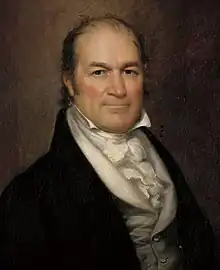 |
William H. Crawford | April 20, 1812 – March 4, 1813 | President pro tempore |
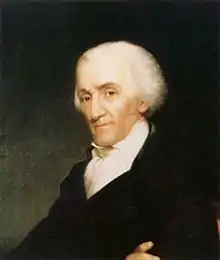 |
Elbridge Gerry | March 4, 1813 – November 23, 1814 | President of the Senate |
 |
John Gaillard | November 25, 1814 – March 4, 1817 | President pro tempore |
 |
Daniel Tompkins | March 4, 1817 – March 4, 1825 | President of the Senate |
 |
John C. Calhoun | March 4, 1825 – December 28, 1832 | President of the Senate |
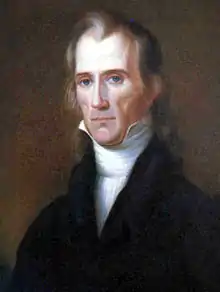 |
Hugh Lawson White | December 28, 1832 – March 4, 1833 | President pro tempore |
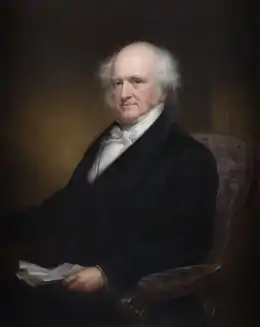 |
Martin Van Buren | March 4, 1833 – March 4, 1837 | President of the Senate |
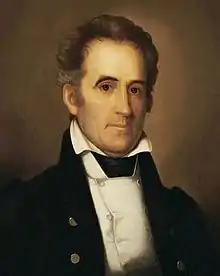 |
Richard Mentor Johnson | March 4, 1837 – March 4, 1841 | President of the Senate |
 |
John Tyler | March 4 – April 4, 1841 | President of the Senate |
 |
Samuel L. Southard | April 4, 1841 – May 31, 1842 | President pro tempore |
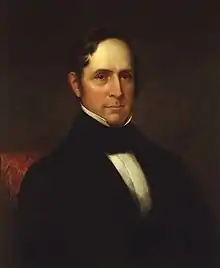 |
Willie P. Mangum | May 31, 1842 – March 4, 1845 | President pro tempore |
 |
George M. Dallas | March 4, 1845 – March 4, 1849 | President of the Senate |
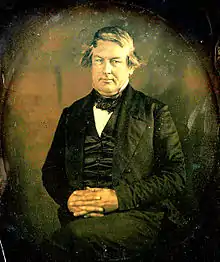 |
Millard Fillmore | March 4, 1849 – July 9, 1850 | President of the Senate |
| Vacant July 9–11, 1850[lower-alpha 1] | |||
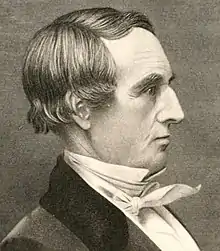 |
William R. King | July 11, 1850 – December 20, 1852 | President pro tempore |
 |
David Rice Atchison | December 20, 1852 – March 4, 1853 | President pro tempore |
 |
William R. King | March 4 – April 18, 1853 | President of the Senate |
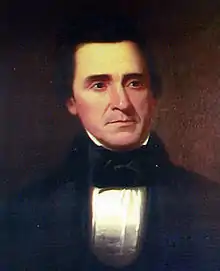 |
David Rice Atchison | April 18, 1853 – December 4, 1854 | President pro tempore |
 |
Lewis Cass | December 4, 1854 | President pro tempore |
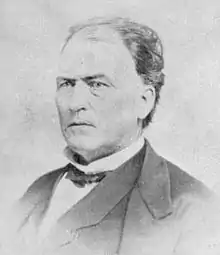 |
Jesse D. Bright | December 5, 1854 – June 9, 1856 | President pro tempore |
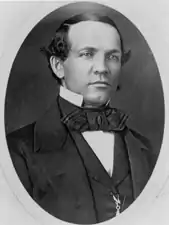 |
Charles E. Stuart | June 9–10, 1856 | President pro tempore |
 |
Jesse D. Bright | June 11, 1856 – January 6, 1857 | President pro tempore |
 |
James Murray Mason | January 6 – March 4, 1857 | President pro tempore |
 |
John C. Breckinridge | March 4, 1857 – March 4, 1861 | President of the Senate |
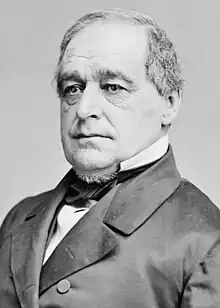 |
Hannibal Hamlin | March 4, 1861 – March 4, 1865 | President of the Senate |
 |
Andrew Johnson | March 4 – April 15, 1865 | President of the Senate |
 |
Lafayette S. Foster | April 15, 1865 – March 2, 1867 | President pro tempore |
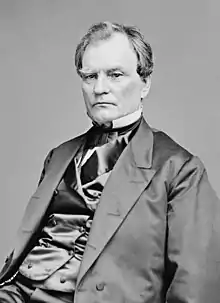 |
Benjamin Wade | March 2, 1867 – March 3, 1869 | President pro tempore |
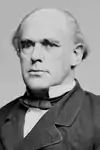 |
Salmon P. Chase | March 13 – May 26, 1868 | Chief Justice (Impeachment trial of Andrew Johnson) |
 |
Schuyler Colfax | March 4, 1869 – March 4, 1873 | President of the Senate |
 |
Henry Wilson | March 4, 1873 – November 22, 1875 | President of the Senate |
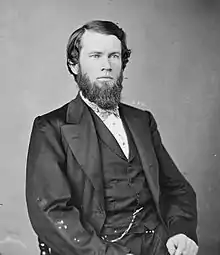 |
Thomas W. Ferry | November 22, 1875 – March 4, 1877 | President pro tempore |
 |
William A. Wheeler | March 4, 1877 – March 4, 1881 | President of the Senate |
 |
Chester A. Arthur | March 4 – September 19, 1881 | President of the Senate |
| Vacant September 19 – October 10, 1881[lower-alpha 2] | |||
 |
Thomas F. Bayard | October 10–13, 1881 | President pro tempore |
 |
David Davis III | October 13, 1881 – March 3, 1883 | President pro tempore |
 |
George F. Edmunds | March 3, 1883 – March 3, 1885 | President pro tempore |
 |
Thomas A. Hendricks | March 4, 1885 – November 25, 1885 | President of the Senate |
| Vacant November 25 – December 7, 1885[lower-alpha 3] | |||
 |
John Sherman | December 7, 1885 – February 26, 1887 | President pro tempore |
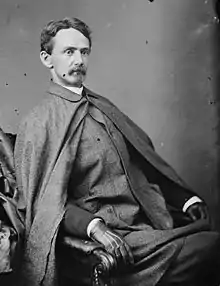 |
John James Ingalls | February 26, 1887 – March 3, 1889 | President pro tempore |
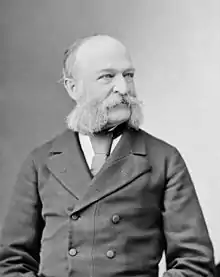 |
Levi P. Morton | March 4, 1889 – March 4, 1893 | President of the Senate |
 |
Adlai E. Stevenson I | March 4, 1893 – March 4, 1897 | President of the Senate |
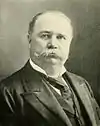 |
Garret Hobart | March 4, 1897 – November 21, 1899 | President of the Senate |
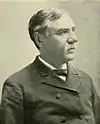 |
William P. Frye | November 21, 1899 – March 4, 1901 | President pro tempore |
 |
Theodore Roosevelt | March 4 – September 14, 1901 | President of the Senate |
 |
William P. Frye | September 14, 1901 – March 4, 1905 | President pro tempore |
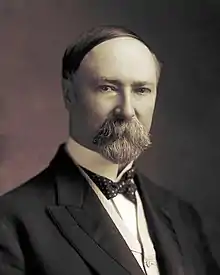 |
Charles W. Fairbanks | March 4, 1905 – March 4, 1909 | President of the Senate |
 |
James S. Sherman | March 4, 1909 – October 30, 1912 | President of the Senate |
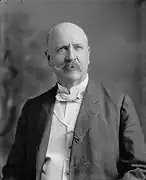 |
Augustus Octavius Bacon | October 30 – December 15, 1912 | President pro tempore (rotating) |
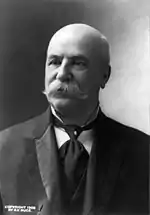 |
Jacob Harold Gallinger | December 16, 1912 – January 4, 1913 | President pro tempore (rotating) |
 |
Augustus Octavius Bacon | January 5–18, 1913 | President pro tempore (rotating) |
 |
Jacob Harold Gallinger | January 19 – February 1, 1913 | President pro tempore (rotating) |
 |
Augustus Octavius Bacon | February 2–15, 1913 | President pro tempore (rotating) |
 |
Jacob Harold Gallinger | February 16 – March 4, 1913 | President pro tempore (rotating) |
 |
Thomas R. Marshall | March 4, 1913 – March 4, 1921 | President of the Senate |
 |
Calvin Coolidge | March 4, 1921 – August 2, 1923 | President of the Senate |
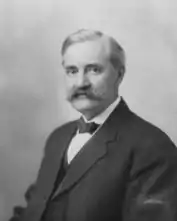 |
Albert B. Cummins | August 2, 1923 – March 4, 1925 | President pro tempore |
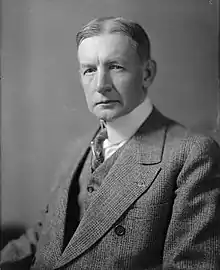 |
Charles G. Dawes | March 4, 1925 – March 4, 1929 | President of the Senate |
 |
Charles Curtis | March 4, 1929 – March 4, 1933 | President of the Senate |
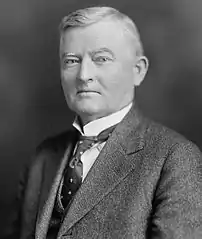 |
John Nance Garner | March 4, 1933 – January 20, 1941 | President of the Senate |
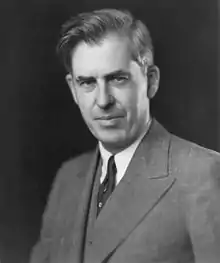 |
Henry A. Wallace | January 20, 1941 – January 20, 1945 | President of the Senate |
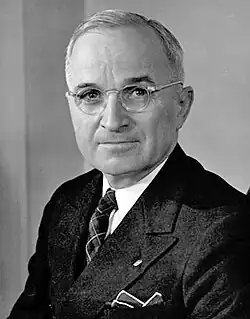 |
Harry S. Truman | January 20 – April 12, 1945 | President of the Senate |
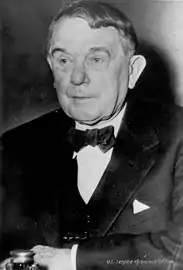 |
Kenneth McKellar | April 12, 1945 – January 4, 1947 | President pro tempore |
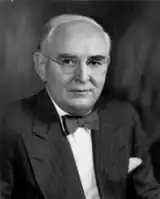 |
Arthur H. Vandenberg | January 4, 1947 – January 3, 1949 | President pro tempore |
 |
Kenneth McKellar | January 3–20, 1949 | President pro tempore |
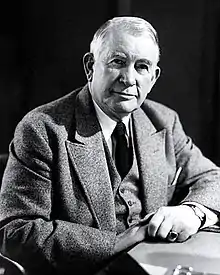 |
Alben W. Barkley | January 20, 1949 – January 20, 1953 | President of the Senate |
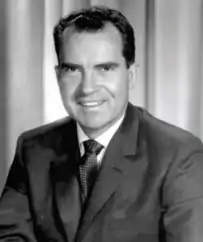 |
Richard Nixon | January 20, 1953 – January 20, 1961 | President of the Senate |
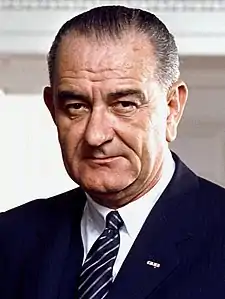 |
Lyndon B. Johnson | January 20, 1961 – November 22, 1963 | President of the Senate |
 |
Carl Hayden | November 22, 1963 – January 20, 1965 | President pro tempore |
 |
Hubert Humphrey | January 20, 1965 – January 20, 1969 | President of the Senate |
 |
Spiro Agnew | January 20, 1969 – October 10, 1973 | President of the Senate |
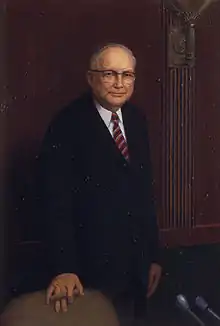 |
James Eastland | October 10 – December 6, 1973 | President pro tempore |
.jpg.webp) |
Gerald Ford | December 6, 1973 – August 9, 1974 | President of the Senate |
 |
James Eastland | August 9 – December 19, 1974 | President pro tempore |
 |
Nelson Rockefeller | December 19, 1974 – January 20, 1977 | President of the Senate |
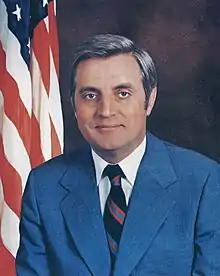 |
Walter Mondale | January 20, 1977 – January 20, 1981 | President of the Senate |
 |
George H. W. Bush | January 20, 1981 – July 13, 1985 | President of the Senate |
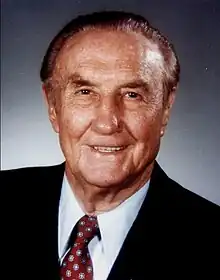 |
Strom Thurmond | July 13, 1985[lower-alpha 4] | President pro tempore |
 |
George H. W. Bush | July 13, 1985 – January 20, 1989 | President of the Senate |
 |
Dan Quayle | January 20, 1989 – January 20, 1993 | President of the Senate |
 |
Al Gore | January 20, 1993 – January 20, 2001 | President of the Senate |
 |
William Rehnquist | January 7 – February 12, 1999 | Chief Justice (Impeachment trial of Bill Clinton) |
 |
Dick Cheney | January 20, 2001 – June 29, 2002 | President of the Senate |
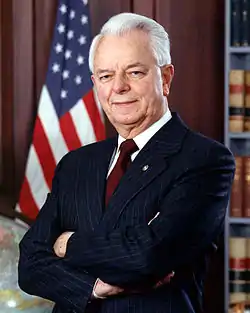 |
Robert Byrd | June 29, 2002[lower-alpha 5] | President pro tempore |
 |
Dick Cheney | June 29, 2002 – July 21, 2007 | President of the Senate |
 |
Robert Byrd | July 21, 2007[lower-alpha 6] | President pro tempore |
 |
Dick Cheney | July 21, 2007 – January 20, 2009 | President of the Senate |
 |
Joe Biden | January 20, 2009 – January 20, 2017 | President of the Senate |
.jpg.webp) |
Mike Pence | January 20, 2017 – January 20, 2021 | President of the Senate |
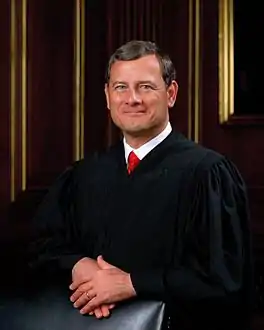 |
John Roberts | January 16, 2020 – February 5, 2020 | Chief Justice (First impeachment trial of Donald Trump) |
.jpg.webp) |
Kamala Harris | January 20, 2021 – November 19, 2021 | President of the Senate |
.jpeg.webp) |
Patrick Leahy | November 19, 2021[lower-alpha 7] | President pro tempore |
.jpg.webp) |
Kamala Harris | November 19, 2021 – present | President of the Senate |
See also
- List of vice presidents of the United States
- List of presidents pro tempore of the United States Senate
- Speaker of the United States House of Representatives, the presiding officer of the United States House of Representatives
Notes
- ↑ The Senate was without both a president and a president pro tempore following Millard Fillmore's accession to the presidency upon the death of Zachary Taylor, until William R. King was elected president pro tempore.
- ↑ The Senate was without both a president and a president pro tempore following Chester A. Arthur's accession to the presidency upon the death of James Garfield, until Thomas F. Bayard was elected president pro tempore.
- ↑ The Senate was without both a president and a president pro tempore following the death of Vice President Thomas A. Hendricks, until John Sherman was elected president pro tempore.
- ↑ Thurmond was the presiding officer of the Senate from 11:28 a.m. until 7:22 p.m. while Vice President George H. W. Bush served as acting president pursuant to President Ronald Reagan's invocation of Section Three of the Twenty-fifth Amendment to the United States Constitution to declare his temporary incapacity while undergoing surgery.
- ↑ Byrd was the presiding officer of the Senate from 7:09 a.m. until 9:24 a.m. while Vice President Dick Cheney served as acting president pursuant to President George W. Bush's invocation of Section Three of the Twenty-fifth Amendment to the United States Constitution to declare his temporary incapacity while undergoing a colonoscopy that required sedation.
- ↑ Byrd was the presiding officer of the Senate from 7:16 a.m. until 9:21 a.m. while Vice President Dick Cheney served as acting president pursuant to President George W. Bush's invocation of Section Three of the Twenty-fifth Amendment to the United States Constitution to declare his temporary incapacity while undergoing a colonoscopy that required sedation.
- ↑ Leahy was the presiding officer of the Senate from 10:10 a.m. until 11:35 a.m. while Vice President Kamala Harris served as acting president pursuant to President Joe Biden's invocation of Section Three of the Twenty-fifth Amendment to the United States Constitution to declare his temporary incapacity while undergoing a colonoscopy that required sedation.
References
- ↑ "Vice President of the United States (President of the Senate)". senate.gov. United States Senate. Retrieved January 24, 2017.
- 1 2 "President Pro Tempore". senate.gov. United States Senate. Retrieved November 2, 2016.
- ↑ Gerhardt, Michael J. "Essay on Trial of Impeachment". The Heritage Foundation. Retrieved November 2, 2016.
- ↑ See "From the Closing Arguments of Hon. Thaddeus Stevens". University of Missouri–Kansas City School of Law. Archived from the original on 2012-08-03. Retrieved 11 May 2020. during the trial of President Johnson and a transcript of Day 17 of the Senate impeachment trial of President Bill Clinton